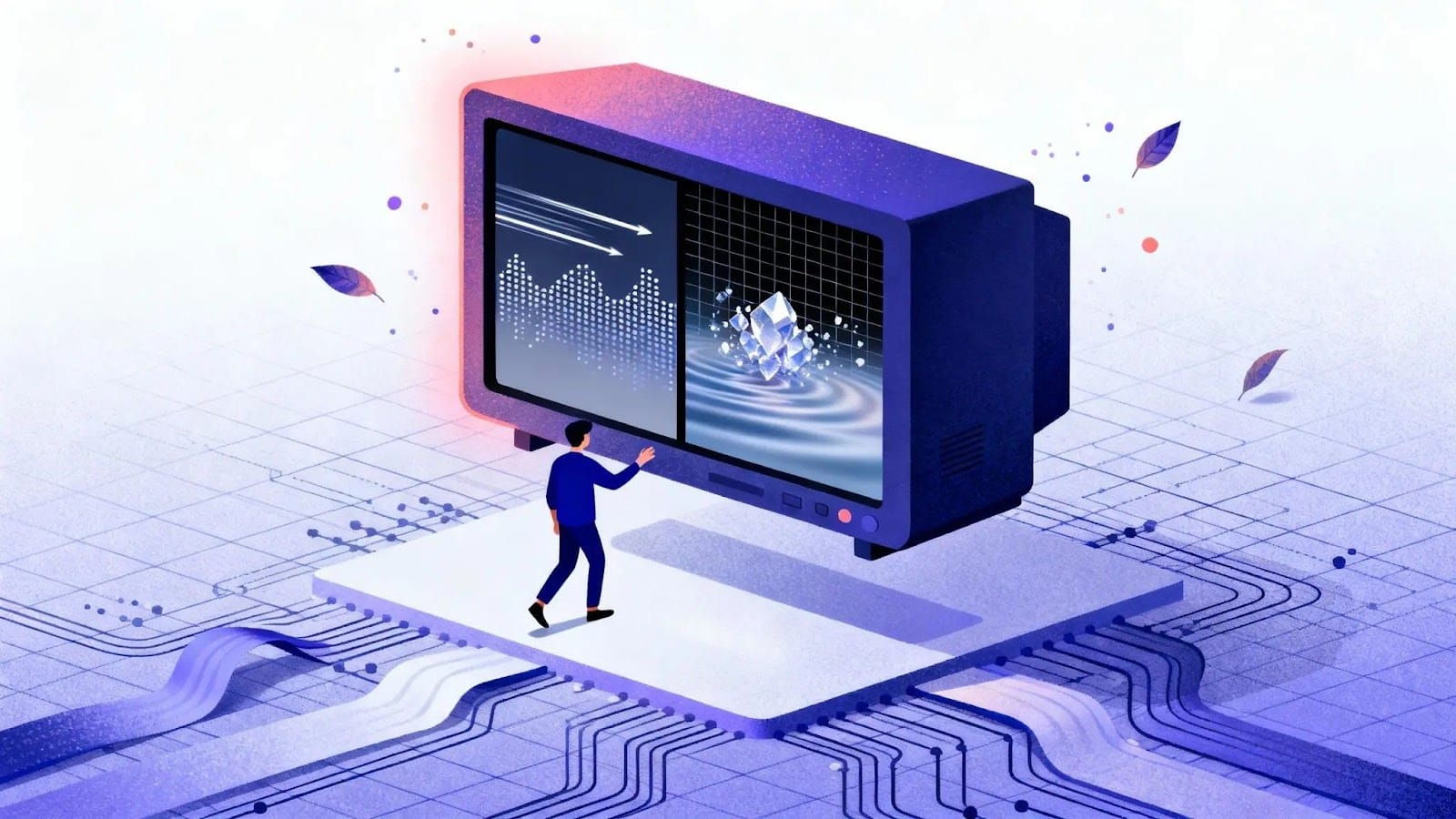Seedance vs Veo 3 Comparison: Which AI Video Model Wins?
Seedance vs Veo 3 comparison with speed, audio, and output clarity. See which model wins for pro AI videos. Read before you choose!

Two AI video models promise cinematic output without manual editing. But do they solve the same problem, or do they excel in completely different places? Let’s look at Seedance vs Veo 3 comparison. Seedance 1.0 is built for structure and continuity. It holds a narrative through multiple shots and preserves motion across cuts. Veo 3 goes in a different direction. It pushes for high-resolution realism, synchronized audio, and physical believability.
So what matters more in your workflow: consistent storytelling or sensory completeness? This guide breaks down the split in features, speed, cost, and fit so you can choose with precision, not guesswork.
At a Glance:
- Seedance 1.0 generates multi-shot, high-fidelity videos quickly, maintaining smooth transitions and consistent motion across scenes.
- Google Veo 3 focuses on integrated audio, 4K resolution, and realistic physics, producing polished cinematic outputs with synchronized sound.
- Both tools can be accessed via Segmind, allowing creators to combine text, image, and video workflows without complex setups.
- Real-world use cases for Seedance include marketing clips, dynamic storytelling, and multi-shot sequences.
- Veo 3 is ideal for audio-driven content, short-form cinematic videos, and projects requiring governance and compliance.
With this overview in mind, let’s take a closer look at Seedance 1.0’s innovations.
What is Seedance 1.0? Core innovations
AI video models traditionally focus on generating a single continuous clip. Seedance 1.0 departs from that pattern. It is designed to construct narratives through multiple coordinated shots within the same output. This shift raises a practical question. What changes when a model begins to think in scenes instead of frames?
Seedance performs shot planning, segmentation and rendering internally. The user does not intervene in camera control or cut logic. The model decides when to move from a distant frame to a medium frame or to a close frame. It maintains temporal stability across those cuts so the narrative does not break.
1) Multi-shot narrative capability
Seedance can generate two or three consistent camera cuts inside a short clip. The transitions between the shots remain smooth. Character identity and spatial structure stay intact even when the viewpoint changes. This enables narrative construction rather than a single-pass depiction of motion.
2) Architecture and cost efficiency
The model employs a two-stage diffusion process combined with reinforcement learning to enforce prompt adherence while accelerating sampling. The result is faster generation at lower cost without discarding structure. On NVIDIA L20 hardware, a five-second 1080p video completes in approximately forty seconds at around fifty cents. The same system is deployed on Segmind, allowing it to be accessed through the Playground, API or PixelFlow pipelines without local setup.
3) Stability under motion
Independent evaluations place Seedance among the highest scoring models for spatiotemporal stability. Motion-intensive scenes such as crowd movement or rapid camera pans remain coherent. Flicker and structural collapse are significantly reduced compared to typical single-shot models.
Segmind currently provides two production variants. Seedance 1.0 Pro Fast focuses on reduced latency. Seedance 1.0 Pro prioritizes fidelity and resolution. Pro Fast finishes a five-second clip in roughly fifty-four seconds at about eighteen cents per run. Pro completes in about sixty seconds at around sixty-two cents per 1080p clip.
Output tokens are priced on a per-million basis and input tokens incur no cost. Tokens are computed using height, width, frame rate and duration divided by 1024.
Also Read: Kling AI vs. Runway vs. Minimax vs. Hunyuan (Compared)
Generate ready-to-use visuals instantly with Flux.1
Now that we’ve explored Seedance, let’s see how Google Veo 3 approaches AI video creation differently.
What is Google Veo 3? Core Features
Veo 3 targets a different problem. Instead of focusing on narrative structure, it focuses on audiovisual completeness. The model generates video and audio together so the output is not only seen but also heard in sync. This raises a practical question. What changes when sound and motion are learned in the same pass instead of being stitched later?
1) Text-to-video synthesis with latent diffusion Veo 3 converts text directly into video sequences using latent diffusion. It produces detailed motion and scene structure that adheres to the prompt while maintaining temporal fluidity.
2) Integrated audio with synchronized dialogue Audio is generated and aligned inside the same process. Dialogue, narration or ambient sound is synchronized to visual motion without external sound design. This removes the multi-tool pipeline normally required to achieve lip and timing coherence.
3) 4K support with physics simulation Veo 3 can render at 4K resolution and incorporate physics-aware motion. Environmental interactions and movement dynamics appear more natural, increasing the perceived realism of the clip.
Veo 3 is deployed on Segmind and can be accessed through the Playground or API using text prompts and optional image inputs with adjustable duration. Audio generation is optional and billed per clip, with typical costs ranging from eighty cents to three dollars and twenty cents depending on length and whether audio is enabled. An eight-second run usually completes in about 149 seconds.
With an understanding of both models individually, it’s important to compare them side by side to see which suits your projects best.
Performance, Speed, and Features: Seedance vs Veo 3 Comparison
Balancing performance, efficiency, features, and cost is key when working with AI video models. Seedance 1.0 and Google Veo 3 both excel in different areas, and understanding these differences helps you pick the ideal tool for your creative projects.
The table below condenses the functional differences that affect real use:
Also Read: How to Fix “Can't Generate Your Video. Try Another Prompt”
Create better videos with the latest AI video generator!
With these differences, you can determine which model aligns with your project needs.
Seedance vs Veo 3 Comparison: How to Choose the Right AI Video Model
Choosing between Seedance 1.0 and Google Veo 3 is not a matter of which is stronger in isolation but which constraint governs your workflow. The decision depends on whether you optimize for structure or immersion, for speed or synchronization, for narrative control or compliance.
The table below frames the same decision criteria as direct triggers for selection:
By evaluating your creative goals, speed, budget, format flexibility, and safety requirements, you can select the AI video model that best fits your workflow and project needs.
Also Read: Image-to-Video Models for Animating Stills and Scenes
Final Thoughts
Creating videos often means long edits, multiple tools, and slow renders. Segmind simplifies this, turning ideas into cinematic output in just a few steps.
Comparing Seedance vs Veo 3, you can produce high-quality videos for marketing, social media, or storytelling without technical expertise. Seedance 1.0 excels in fast multi-shot sequences, while Veo 3 delivers 4K videos with synchronized audio and realistic physics.
Segmind’s cloud-based platform and PixelFlow feature let you run these AI models seamlessly, combine multiple workflows, and optimize your creative process. With continuous updates and new features, AI video generation is becoming faster, smarter, and more accessible for developers, creators, and AI enthusiasts worldwide.
Get Hands-On with Segmind’s AI Tools for Free Today
Frequently Asked Questions
1. How does Seedance 1.0’s multi-shot capability improve video storytelling?
By supporting 2–3 cohesive camera cuts within short clips, Seedance 1.0 lets creators craft more structured narratives. This ensures smooth transitions, consistent motion, and a cinematic flow that elevates visual storytelling, especially for marketing or dynamic scene sequences.
2. In what ways does Google Veo 3 enhance audio-visual integration?
Veo 3 synchronizes dialogue, narration, and ambient sounds automatically with generated video. This results in natural lip-sync, accurate timing, and seamless audio-visual coherence, making it ideal for enterprise demos, tutorials, or voice-driven content.
3. Can Seedance 1.0 and Veo 3 be integrated into automated workflows?
Yes. Both models support serverless cloud-based or API integrations, allowing scalable, programmatic video generation. This is suitable for on-demand content creation, marketing automation, or bulk video production without manual rendering.
4. How do Seedance 1.0 and Veo 3 maintain visual fidelity in motion-intensive scenes?
Seedance 1.0 uses spatiotemporal consistency and inter-shot coherence to prevent abrupt motion or flickering, while Veo 3 leverages latent diffusion with physics simulation. Both models maintain smooth, realistic visuals across dynamic sequences.
5. How flexible are these models with different artistic styles or resolutions?
Seedance 1.0 supports multi-shot cinematic outputs with adjustable fidelity, whereas Veo 3 can produce up to 4K resolution with integrated audio. Both handle diverse styles, from realistic visuals to stylized animations, for versatile content creation.
6. What are the key efficiency and cost advantages of Seedance 1.0?
Seedance 1.0 achieves up to 10× faster generation through a two-stage diffusion framework with RLHF and multi-stage distillation. It can generate a 5-second 1080p clip in roughly 41 seconds for just $0.50, making it highly cost-effective for creators and developers.
7. Which model is best for specific use cases?
Use Seedance 1.0 for fast, multi-shot narrative videos with high visual consistency. Use Google Veo 3 when high-resolution video with synchronized audio and physics-based realism is critical, such as product demos, tutorials, or cinematic marketing content.

